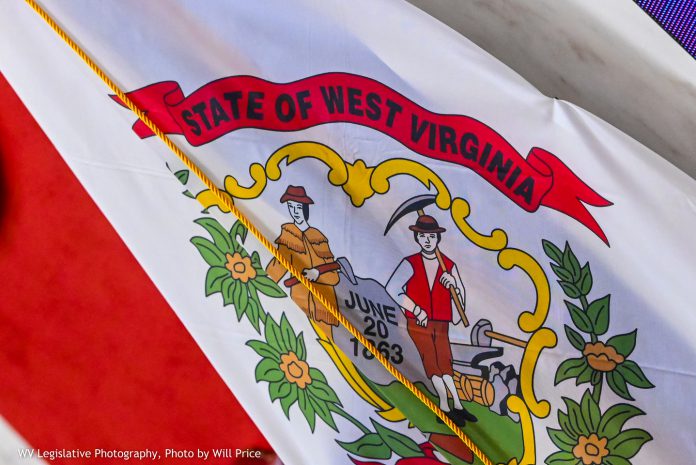
The cardinal, the black bear and the rhododendron are all symbols associated with the Mountain State, but as is the case with any expression as firmly connected with an entity as these are with West Virginia, their meanings and origins have perhaps been swallowed by their familiarity. But given some closer inspection, their histories may prove illuminating and curious.
The Legislature ultimately sings the tune in the adoption of trees, birds, animals and colors that have become the symbols of West Virginia. On the other hand, the people of West Virginia make the initial push for the consideration of these symbols as official state emblems.
Usually, citizens, organizations or schoolchildren, after researching particular symbols that they think are appropriate to represent their fine state, make a request for a resolution to be introduced. Once the residents show an interest in a new state emblem or symbol, polls of various groups are usually conducted, and the resolution is introduced with the recommendation from the poll.
Of course, some of West Virginia’s symbols are well-known throughout the state, but others are recent additions, not widely known, while others still may be downright obscure.
The state flower, the rhododendron, is our state’s oldest symbol. Actually a flowering shrub, it is most commonly seen with purple, pink and white blooms in the latter part of spring. The flower (also known as big or great laurel) was selected on January 23, 1903, by a joint resolution from both houses. The resolution was approved after the rhododendron beat the honeysuckle and wild rose by more than 15,000 votes in a poll of public schoolchildren from across the state.
Following the same process, college students, garden clubs, civic organizations, sportsmen clubs and bird study groups helped to officially name the sugar maple as the state tree and the cardinal as the state bird. The cardinal has been the state bird since a concurrent resolution was passed during the 1949 legislative session, after animal enthusiasts expressed an increased interest in state wildlife. The scarlet red male of this species is easily recognizable with its black eye mask and yellow beak with the females and young birds being harder to spot and showing a duller color in relation to the male bird. The cardinal was in competition for its title with 10 other birds including the robin, the tufted titmouse and the bluebird but led those birds by more than 11,000 votes.
Clay County is home to another of our state symbols, the golden delicious apple, which was developed in 1912 by Anderson Mullins of Porter Creek. Since 1972, apples, in general, were the state fruit until lawmakers specified that the yellow-freckled apple is West Virginia’s official state fruit during a legislative session in 1995.
Meanwhile, yellow is not only the color of the state fruit but is one of the two colors that were deemed symbols of West Virginia by Senate Concurrent Resolution 20 in 1963. The resolution declared old gold and blue to be the official colors of the state during the state’s centennial year, a fitting 100th birthday present.
West Virginia’s sportsmen selected the official state fish. A native West Virginia species, the brook trout, was almost unanimously voted during a poll conducted by the Division of Natural Resources (DNR). This trout is one of the most popular North American game fish, easily recognizable with its vibrant colors and known for being feisty in nature, perhaps mirroring the freedom loving Mountaineer spirit. Under House Concurrent Resolution 6 in 1973, the Legislature selected the brook trout over smallmouth bass, largemouth bass, musky and bluegill, the other choices in the DNR poll.
Although some residents of the state have not seen a black bear in the wild, it has been recognized as the state animal since March 6, 1973, following the results of a poll conducted by the DNR among teachers, students and sportsmen. The only species of bear native to West Virginia, black bear are most commonly found in the mountainous southeastern regions of the state.
During the 2004 legislative session, September 12 was proclaimed Monarch Butterfly Day. This is a day to commemorate and preserve the butterfly of the state, which was declared in March 1995 by Senate Concurrent Resolution 11. This butterfly is only seen in the state during certain parts of the year because these colorful insects follow annual migration patterns from the Mountain State to Mexico and back again.
One of the most unique (some might say bizarre) symbols is our state soil, Monongahela silt loam. West Virginia is one of only 19 states to have adopted an official soil. Senate Concurrent Resolution 5 was passed in 1997 after concerns for soil resources were rising in the United States. West Virginia has more than 100,000 acres of Monongahela silt loam, making it an easy choice as the official native soil of the state.
The most recent addition to the state’s menagerie of symbols is the honeybee. After many hours of debate, the honeybee was adopted, over the lady beetle, as the official state insect in 2002 by the Senate Concurrent Resolution 9.
These symbols provide the state’s residents with a distinctive bond and a way to identify with the region. They help distinguish the state of West Virginia and are a definitive source of pride for its citizens. Regardless of the research, lobbying and polls that lead to the adoption of symbolic representations of West Virginia, the symbols themselves stand as historic icons that help define the Mountain State.

